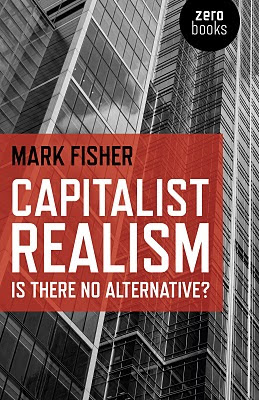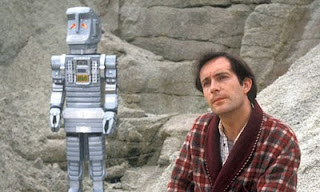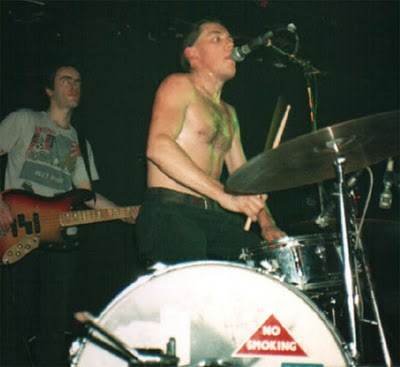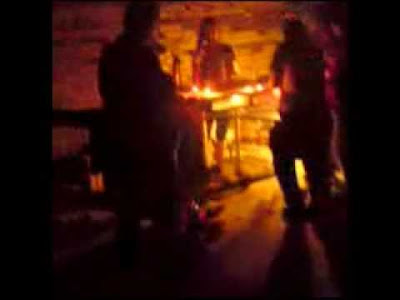According to the website, this show “replaces the traditional survey with a provisional set of juxtapositions that challenges the viewer to make new connections.”
In other words, there’s no single big idea it wants to strike you with so much as an assemblage of points, a series of suggestions flying in different directions, works not lined up like words in a developing argument but thrown into a grab-bag. At one point, Damien Hirst insists sculpture must have a “wow factor”, or else its not really utilising its own medium. So, instead of responding to a through-line that’s not really there, let’s take his word and go through things in search of wows.
Wow 1! Transcending the Primitive
After an introductory area contrasting representational and abstract sculpture, we enter the room ’Theft By Finding.’ This alternates primitive sculptures from the British Museum with modernist works which they inspired. Despite all the talk of juxtapositions, what we have here is anti-juxtapositional - separate types of objects are put together so we might see the links. (And, truth to tell, quite frequently I couldn’t tell ancient from modern.)
It’s not too fanciful to say that modernists were not just influenced by primitive art but by this primitive art. It seems generally agreed that it was with its sculpture that primitive art had its greatest influence. (Even when affecting other disciplines, such as Picasso painting heads as African masks.) Sculpture was then seen as inherently primitive, or at most artisan, as it implied working with your hands. And these British Museum displays are some of the very pieces which our modern British sculptors will have gazed upon.
...which has it’s pros and cons. In contrast to the earlier Gauguin show (more of which anon), and despite that headline word “theft”, we see the primitive here pretty much the way the modernists saw it – something idealised, something culturally unified irrespective of where in the world it was made, something easily transportable, something open for plunder.
In an uncommented moment, a male figure from the Congo carries both a staff and a gun. Was this a deliberate attempt to unite the modern and ancient worlds, or was the artist simply depicting what he saw around him? Whichever way, the modern artifact questions the supposed ‘authenticity’ of these ‘primitive’ pieces. The Westerners blithely assumed their arrival would leave this art completely unaffected, in some supposed state of natural timelessness. (The recent Gryff Rhys Jones programme ’Hidden Treasures of African Art’ had some interesting material on this, including workshops where ‘primitive’ icons would be knocked up and then roughed up to give them that lucrative look of age.)
...but onwards to the only other work to be given a room of it’s own – Caro’s ‘Early One Morning’. When this show was featured on the Late Review, one panellist asked how come Caro’s work wasn’t just a load of old metal bolted together? So it’s not just me then. In fact, despite the single-room status, even the indicia seems lukewarm on the subject, telling us it’s “widely considered to be Caro’s greatest work” but adding that it comes on the coat-tails of Moore and Hepworth. Let’s move on...
The rest to follow...
It all seems almost too easy to kick holes in. Of course it’s an absurdly over-romanticised picture, of course the master looking at the servant will see only what he wants. In some ways it feels as if the whole of modernism is held in this one room, like a plant whose growth is defined by its roots.
But at the very same time you see through it all you keep looking. Modernism should be spent, but it’s like something you’re forever picking up to throw away only to find yourself gazing at. In some way I find hard to define, this work remains compelling. Modernism continues to exert its spell.
Yet, however enjoyable an experience this room is, the fact remains that it tells us something uncontroversial, something we already know, and in a fairly orthodox manner. With it we imagine what we have in store is a solid but unchallenging chronology, a kind of Cliffs Notes version of the history of British sculpture. But it turns out the true juxtaposition comes when you walk into the next room where things (almost literally) come alive...
Photograph: David Levene from the Guardian
If you don’t get a wow factor from Jacob Epstein’s giant alabaster ‘Adam’ (1938, above), please check your pulse. As the indicia explains, this “builds on and transforms the lessons learnt from the British Museum by aspiring to give contemporary figures a monumental quality.” But it’s not just the gargantuan scale that marks the shift... The handouts describe it as possessing “an enduring vitality”, neatly summing up the paradox it contains. For this mighty behemoth is a shape of two halves...
The primitive statues in the previous room, whatever the nonsense about them coming from outside time, are notably almost always static in pose - suggesting they take up a fixed place in an eternal cosmos. Detail will sometimes even trail off beneath the torso, as if that’s not the centre of attention. The giant Easter island heads, embedded in the Earth, take this to the fullest extreme but it’s a general tendency. As Hannah Arendt says, quoted later in the exhibition, “the things of the world have the function of stabilising human life.” And indeed here the head is set straight back, as if fixed upon the heavens, the arms held firmly against the chest.
But look to the lower half – one foot striding boldly forward, the dick swinging as if bouncing along. The active pose reminded me of those old Sinbad films which almost always featured a statue coming to life. It’s no longer merely imitative of the ancient, it’s something modern rooted in the ancient.
Although put in with Henry Moore’s ‘Snake’ (1924), this is Adam in the sense only of the first man. It is nothing to do with the subservient and then fearful character from the Bible, if anything this first man is Nietzschean. It’s a pre-Fall myth of a time when primordial man towered like a giant over the Earth, simultaneously looking skyward and dominating his realm.
Primitive mythology is replete with images of the axis mundi (or world centre), the one tree or giant pillar that joins heaven and Earth. But here that pillar has become man himself. The image thereby becomes the axis mundi equivalent of a two-way street. Rather than a distant mountain or stairway for ascetics to ascend, it becomes not escape route from but linkage point to the Earth.
(Some of the more pointed critiques of this show have lamented that it excludes the Vorticists. Though Epstein was a paid-up member, this work comes from after their dissolution and – great though it is - doesn’t resemble their style. But the good news is that this summer Tate Britain is devoting a show to them! I shall certainly be there!)
Not Quite Wowed: Sculpture as Power Totem
The next room, ‘The Establishment Figure', embarks upon a new theme - “the various ways in which the sculpted figure can acquire authority.” This time Alfred Gilbert’s ‘Jubilee Memorial to Queen Victoria’ (1887, above) dominates the room, with a wow factor of quite a different kind. Equally huge of scale (the plinth itself over three feet tall), it’s less monumental achievement than grand folly – it looks spectacular but spectacularly wrong! Though officially commissioned, if the materials weren’t so costly and cumbersome to use you would think it a piece of outsider art.
We see a face recurrently on the coins and stamps we use, and we accept that it is only a tangentially a real person, that what it represents is the focus. But with this work the person is strangely present, yet simultaneously trapped within the apparatus of power. Her legs disappear into the billowing folds of her cloak, as if the years have fused her with her throne – like Prometheus bound to his rock. A crown is on her head, but an oversize one still hovers above, highlit in gilt against the bronze used elsewhere, as if it rules her rather than she rules through it. Its removed depiction of Victoria reminded me of the grand but isolated figure from Moore and Campbell’s ’From Hell’ comic. Though I doubt any of this was intentional on the part of the artist, it recalls not Britannia ruling the waves but a bird in a gilded cage.
('From Hell' by Moore & Campbell, published by Top Shelf.)
But before we let this wow factor distract us we should note that the room’s theme, a recurrent one in sculpture, is perhaps rather glossed over. There are only two other figures in the room, and neither especially memorable.
It seems to me that the next two rooms would have worked better swapped over, with the “public sculpture” of Barbara Hepworth and Henry Moore following the power art of ‘The Establishment Figure’, so let’s pretend here that they were done that way. In the post-war era power became less personalised, more likely to reside in institutions. A hospital or school was once be named after a local magnate, and have a towering sculpture or commanding portrait of him dominating it’s entrance. Post-war they would be run by a government department. (Increasingly today they will be run by a corporation, and prominently feature their logo.)
It therefore came to be commemorated in sculpture of semi-abstracted figures and idealised forms. Hepworth’s ’Single Form (Memorial)’ (1961, above) was for the UN building. (A body which did not even exist pre-war.) We might quibble that Lutyen’s Cenotaph memorial (shown in the first room), dedicated to the “Unknown Soldier”, was already working in this direction, but this is certainly something which came to a head after the Second World War.
As was chewed over on the recent show devoted to Moore, this ultimately proved to be the means by which Modernism became conservative. There’s a strange swapping-over afoot. The fault-line running through something like Expressionism is its fixation with the self, with the subjective world. Moore and Hepworth don’t resolve this problem, they merely invert it. Art becomes all about the social and ends up as merely institutional.
But it doesn’t pay to get too schematic about these things, and both works on display here have their impact. I might even have awarded them a fully-fledged Wow! factor had they been less familiar to me.
Wow 2: Splitting the Sculptural Atom
The next room, ‘Ceramics and the Influence of Craft,’ has as it’s thesis that ceramics, particularly from China, led to “a growing appreciation of abstract beauty.” Perhaps a side-effect of this is that it leads to sculpture in the round, works with no obvious front. Though the show does not specifically comment on this it’s notable that the display cabinets have to be single units dotting the room, allowing punters to walk around them.
These roots of abstraction should lead us into the first room to be devoted to a single work – Richard Hamilton and Victor Pasmore’s “total environment” piece ‘an Exhibit’ (Wacky capitalisation Theirs) of 1957. I’m not sure I saw much mention of this work before attending, yet it’s perhaps the biggest wow of the show. This scant media attention may stem from it being highly site-specific, as much instillation piece as sculpture, you’d only get a much reduced sense of it in a photo or on a TV screen. In fact description does it no favours, just try the following... a series of coloured panes (often semi-transparent) arranged at different heights and angles. Trust me, it’s truly one of those had-to-be-there things.
The indicia comments “the viewer... is placed within the work, looks through it instead of outside.” In fact even the other punters become incorporated, what are normally intruding heads between you and the works or at best peripheral shadows. As they walk through it, on their grounded linear paths, they emphasise by contrast how it has no up, no down, no left, no right.
It’s reminiscent of those sequences in Ditko’s Dr. Strange comics (below) where an alternate reality system of abstract shapes would suddenly burst into ours. This is enhanced by a juxtaposition that’s presumably unintentional, as it’s geometrical forms stand out from the classicism of the Academy’s architecture and decor – it’s curved arches and ornate ceilings.
I seem to be comparing everything to comics today. (Good job I didn’t mention how Epstein’s ’Adam’ recalls Jack Kirby!) So let’s quickly add another comparison – to the splitting of the atom, another great signifier of the post-war world. Sculpture, once a solid block of a thing, has become a series of elements floating in open space. It couldn’t be further from the sense of the eternal that opened this exhibition.
Not since seeing Gustav Metzger’s ’Liquid Crystal Environments’ at the Serpentine have I felt compelled to stay in a room so long after I’d ‘seen’ the piece of art. I kept thinking there must be some pattern or symmetry to it somewhere, but simultaneously felt delighted when I couldn’t decipher one. (I later read in the notes that “the work was constructed with a predetermined number of manufactured elements and a fixed set of rules.”) I perhaps got this sense from the feeling that the work, while exhilarating, is also calm and ordered. (Making Pasmore and Hamilton true disciples of Duchamp, not mere imitators.)
The rest to follow...


















